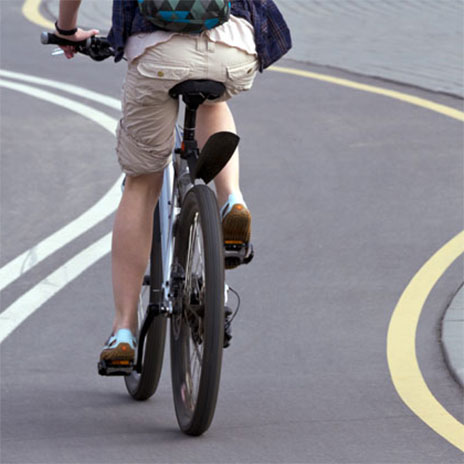
- Afrikaans
- Albanian
- Amharic
- Arabic
- Armenian
- Azerbaijani
- Basque
- Belarusian
- Bengali
- Bosnian
- Bulgarian
- Catalan
- Cebuano
- Corsican
- Croatian
- Czech
- Danish
- Dutch
- English
- Esperanto
- Estonian
- Finnish
- French
- Frisian
- Galician
- Georgian
- German
- Greek
- Gujarati
- Haitian Creole
- hausa
- hawaiian
- Hebrew
- Hindi
- Miao
- Hungarian
- Icelandic
- igbo
- Indonesian
- irish
- Italian
- Japanese
- Javanese
- Kannada
- kazakh
- Khmer
- Rwandese
- Korean
- Kurdish
- Kyrgyz
- Lao
- Latin
- Latvian
- Lithuanian
- Luxembourgish
- Macedonian
- Malgashi
- Malay
- Malayalam
- Maltese
- Maori
- Marathi
- Mongolian
- Myanmar
- Nepali
- Norwegian
- Norwegian
- Occitan
- Pashto
- Persian
- Polish
- Portuguese
- Punjabi
- Romanian
- Russian
- Samoan
- Scottish Gaelic
- Serbian
- Sesotho
- Shona
- Sindhi
- Sinhala
- Slovak
- Slovenian
- Somali
- Spanish
- Sundanese
- Swahili
- Swedish
- Tagalog
- Tajik
- Tamil
- Tatar
- Telugu
- Thai
- Turkish
- Turkmen
- Ukrainian
- Urdu
- Uighur
- Uzbek
- Vietnamese
- Welsh
- Bantu
- Yiddish
- Yoruba
- Zulu
Nov . 05, 2024 03:21 Back to list
how to adjust rear derailleur mountain bike
How to Adjust the Rear Derailleur on a Mountain Bike
Adjusting the rear derailleur on your mountain bike is an essential skill for any cyclist. A properly working derailleur ensures smooth shifting and optimal performance during your rides. Whether you're experiencing issues such as skipping gears or misalignment, this guide will walk you through the steps to adjust your rear derailleur effectively.
Understanding the Rear Derailleur
The rear derailleur is the component that shifts the chain between the different cogs on your cassette. It accomplishes this by moving the chain laterally, allowing you to change gears. Correct adjustment is crucial for preventing chain slippage and ensuring the longevity of your bike components. The main parts of the rear derailleur include the cage, the tension spring, and the limit screws.
Tools You Will Need
Before you begin, ensure you have the following tools on hand
- A Phillips screwdriver - A 5mm Allen wrench - A bike stand (optional but helpful) - Chain lubricant
Step-by-Step Adjustment Process
1. Initial Inspection
Start by inspecting your derailleur for any visible damage or loose screws. Ensure that the derailleur hanger (the part that connects the derailleur to the bike frame) is not bent. A misaligned derailleur hanger can cause shifting issues, so correct it if necessary. Next, check the condition of your chain and cassette for wear or damage. A worn chain can cause poor shifting performance regardless of derailleur adjustments.
how to adjust rear derailleur mountain bike

The first adjustment involves the limit screws. These screws control how far the derailleur can move to the left (screw marked L) and to the right (screw marked H). Shift the bike into the smallest chainring at the front and the smallest cog at the rear.
- Low Limit (L) Adjustment Use the Phillips screwdriver to turn the L screw. The derailleur should align perfectly with the smallest cog, with no chance of the chain falling off the inside. If it doesn’t line up, adjust until it does. - High Limit (H) Adjustment Shift to the largest cog at the rear and the smallest chainring at the front. The derailleur should also line up with the largest cog, preventing the chain from falling off the outside. Adjust the H screw as needed.
3. Indexing the Gears
Once the limit screws are set, it’s time to index the gears. Indexing ensures that each click of the shifter moves the derailleur the correct distance to place the chain perfectly on each cog.
- Shift through the gears multiple times and notice if the chain skips or hesitates. If it does, use the barrel adjuster (located on the derailleur or shifter) to make micro-adjustments. Turning the barrel adjuster counterclockwise will increase tension and help the chain shift up to a larger cog while clockwise decreases tension.
4. Check the Chain Tension
After indexing, check the chain tension. The chain should be taut enough to prevent skipping but not so tight that it restricts movement. If you need to adjust tension, this can often be done by turning the B-screw, which controls the distance between the top pulley of the derailleur and the cassette. Aim for a distance of about 5-6 mm when the chain is on the largest cog.
5. Test Ride
Once you've made your adjustments, take your bike for a test ride. Shift through all the gears to ensure smooth operation. Pay attention to how well the chain moves between cogs, and listen for any unusual sounds. If you experience any issues, return to the previous steps to make further adjustments as necessary.
Conclusion
Adjusting the rear derailleur on your mountain bike can greatly enhance your riding experience. With practice, this skill will become a routine part of your bike maintenance, ensuring that you get the most out of your cycling adventures. Happy riding!
-
The Ultimate Kids' Four-Wheeler Experience
NewsJul.09,2025
-
The Ultimate Guide to Mountain Bikes: Gear Up for Your Ride
NewsJul.09,2025
-
The New Age of Cycling: Electric Bikes for Every Rider
NewsJul.09,2025
-
The Best Kids Bicycles: Ride in Style and Safety
NewsJul.09,2025
-
The Best 3-Wheel Scooters for Kids: Fun, Safety, and Adventure
NewsJul.09,2025
-
Revolutionize Your Ride: Affordable Electric Bikes
NewsJul.09,2025
-
Finding the Perfect Mountain Bike for Every Rider
NewsJul.09,2025



